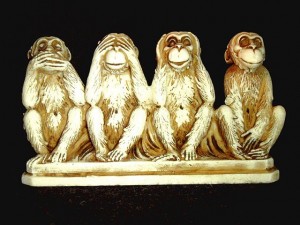Ghost Paint
The dark elves of the tropical jungles in the south make a special paint from chalk and various plants and minerals with alchemical properties that is used to draw runes on the bodies of their warriors. These runes draw energy from the spirits of the clan and the jungles they inhabit to give the warriors strength and protection. The runes can be created at different degrees of complexity, with the fully completed patterns being the most powerful ones.
Least runes are very simple and only a couple of lines and can be done in a minute. Shamans apply a few of these to themselves every morning and when going to war all the warriors are given some to protect them in battle. Even apprentice shamans can do these and scouts patroling the borders of the clans territory are often given one or two by an apprentice before leaving the village.
Lesser runes are used much more limited and are only given to special people, like senior shamans, leaders of warbands, or scouts send into enemy territory. They take 10 minutes to create and can give the person significantly increased strength, reflexes, and perception.
Greater runes take one hour to make and are therefore only used for very special situations like shamans summoning a very dangerous spirit, chiefs leading their warriors into battle, or clan champions fighting an important duel. They can give a person inhuman strength and endurance and require a great deal of magic power from the shaman that creates them.
True runes are the most powerful patterns that can be made. They take several hours to make and a very experienced shaman, but when completed they allow a spirit to take full possession of the person as its avatar. The possessed person becomes incredibly powerful, but it is widely believed that any person who has once been possessed this way could become possessed again without summoning the spirit god and then it would not be bound by any contract made with a shaman. Therefore anyone who had been given a true rune must be slain after the possession ends.
Soulstone
A soulstone is a gem or piece of bone that has been carved with many symbols that serve as clues how one could find the place where they were originally made and to which clan it belongs. A soulstone is given to any members of a Vandren clan who leave the clans ancestral homeland and serves as an anchor for the owners soul in case he should die on his journey. If a Vandren dies while in possession of his soulstone, his soul will retain its form for far longer before completely fading into the spiritworld. If the soulstone is returned to his clan, the spirit will follow it and can be laid to rest by the clan shaman in the village shrine. It is believed that the shrines in the center of Vandren villages is a source of spirit power that allows any newborn children in the village to gain some of the strength and courage of their ancestors. If a Vandren would die far away from the clan, his power would be lost to them, but with a soulstone at least some of it can be recovered even long after the person has died and his spirit almost entirely faded away.
Clans will always give very great rewards for anyone who returns a soulstone to the shrine regardless of the circumstances of its recovery. Getting the strength and courage back which has been with their ancestors for generations is more important than any indignity of paying a scoundrel or greedy treasure hunter. Sometimes soulstones pass through several hands before they reach their final destination, as it is well known that they can be turned into gold and silver eventually. The easier the clan indicated by the engravings is to identify and the closer its current location, the more valuable they are. Some highly dispicable warriors collect the soulstones of the enemies they have slain and keep them as amulets to claim their power for themselves. To almost any other halfway decent folks this is one of the most horrible things that could be done to an enemy and absolutely without any honor. Anyone with at least some shred of honor will see that the soulstones of fallen enemies are returned to their clan.

